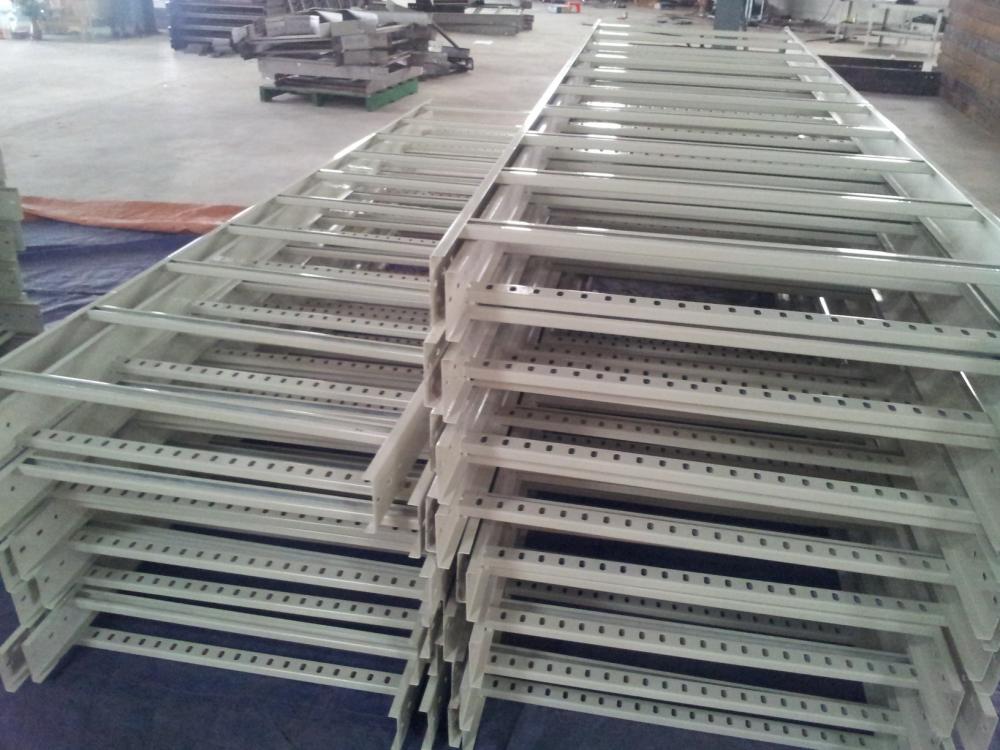WHICH MATERIALS ARE CABLE LADDERS NORMALLY MADE OF?
There are many types of cable ladders, each manufactured with different materials to serve different requirements. The difference of cable ladder types lies in the product quality determined by the material that produces it. The following article will give you detailed information about materials to produce common cable ladders.

The cable ladder is a mechanical product that is used heavily to run power lines. Today, cable ladders have become an essential part of industrial and commercial constructions. It provides fast, economical, flexible and efficient solutions for wiring problems in buildings.
Cable ladders can support all types of wiring system including:
- High voltage electric conductors
- Electric distribution cables
- Sensitive control conductors
- Telecommunication cables
- Optical fibers
Most cable ladders are made of corrosion-resistant metal (low carbon steel, stainless steel or aluminum alloy) or from a corrosion-resistant metal (zinc or epoxi resin).
The choice of materials for any particular installation cases depends on the installation environment (corrosion and electrical problems) and investment costs.
Aluminum
Cable ladders made from aluminum are often used by high strength to weight ratio, good resistance to corrosive environment and easy installation. Aluminum cable ladders have the advantage of light weight (about 50% of steel cable trays) and low maintenance cost. Since the aluminum cable ladders are not electromagnetic, the electricity consumption may be reduced to a minimum.
Cable ladder and cable tray products are made up of 6063 alloys used for marine applications. Alloys containing silicon and magnesium are proportionally suitable for forming magnesium silicate - an alloy capable of good heat treatment. The silicon magnesium alloy has good structural form and properties and excellent corrosion resistance.
Aluminum cable ladders and cable trays are resistant to corrosion, including weather and other corrosion effects of air by the formation of a stable aluminum oxide layer on the aluminum surface. Persistence with aluminum chemicals in the real environment should be checked before installation.
Steel
Cable trays are made of steel with a characteristic structure using a continuous rolling process - forming. Forming and extruding will increase mechanical strength.
The main benefits of high-strength and low-cost steel cable troughs. Its disadvantages are high weight, low conductivity and relatively poor corrosion resistance.
The corrosion rate will vary depending on factors such as the environment, the coating or the protective layer used and the components of the steel.
Stainless Steel
Stainless steel has a high elastic limit and high resistance to magnetism even in high ambient temperatures.
Stainless steel trough ladders are made from stainless steel AISI Type 316.
Stainless steel has high durability with organic chemicals and inorganic chemicals even at high temperatures. Higher amounts of chromium and nickel and reduced carbon content help to increase resistance to corrosion and welding becomes easier. Type 316 including molybdenum increases durability with high temperatures and enhances corrosion resistance, especially with chloride and sulfuric acids.
Other news
- Tìm hiểu về cấu tạo sợi cáp quang và phân loại cáp
- Extreme Announces First Integrated Solution Following Avaya Acquisition
- The design and the applications of twisted –pair cables
- Tìm hiểu về bảng đồng tiếp địa chống sét
- Characteristics and the usage of resin cable ties in the telecommunications industry
- Types of Fiber Optic Patch Cord
- Khuyến Nghị Sử Dụng Máy Đo Ethernet – EXFO ETS-1000 / ETS-1000L
- Khuyến Nghị Sử Dụng Máy Đo Phân Tích Phổ - Anritsu MS2711E
- The differences between Optical Fibers and Coaxial Cables
- Electric Cables – Square Power Cables - Kingsignal | T.A.T Telecommunications
.png)












